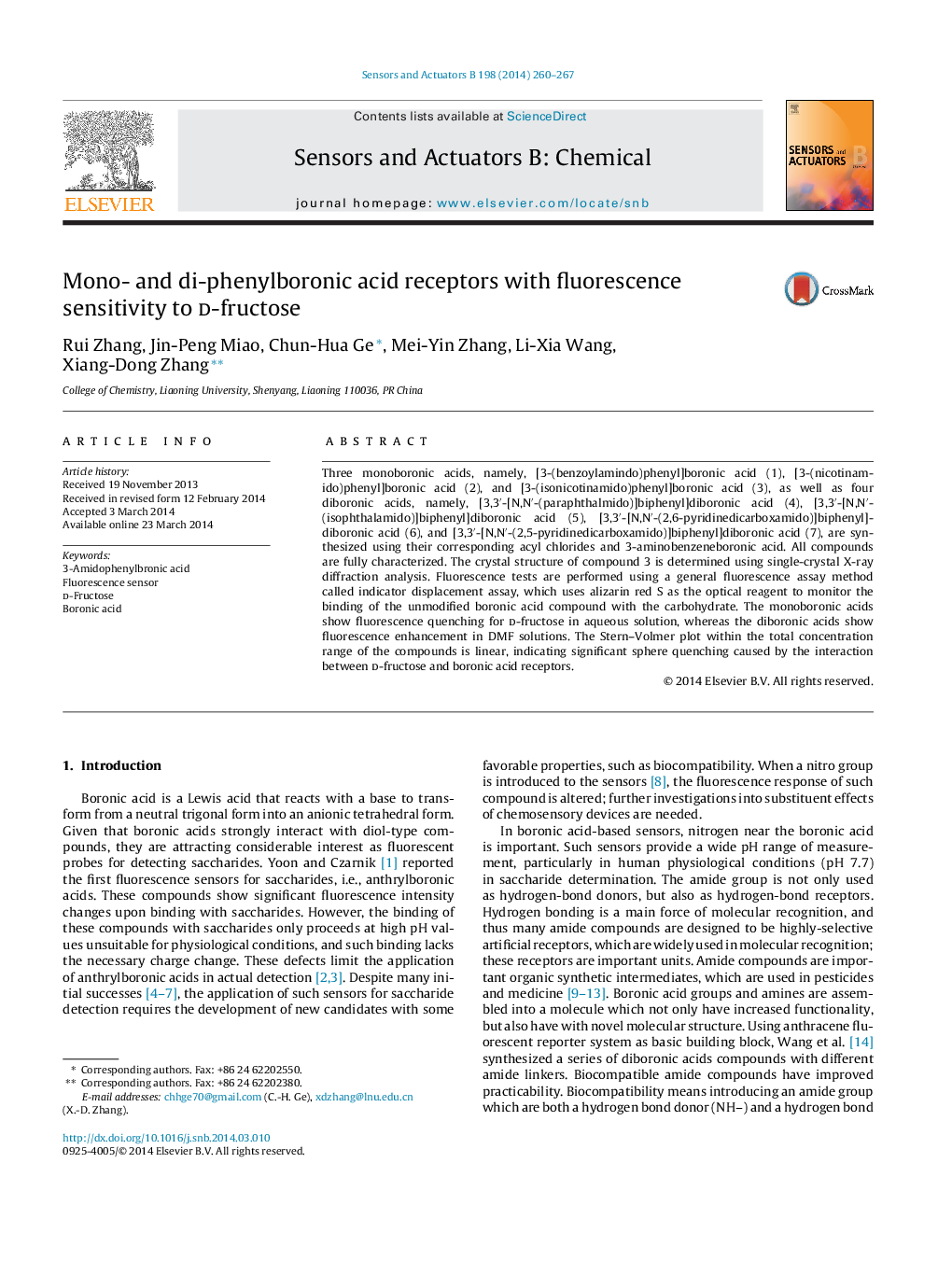| Article ID | Journal | Published Year | Pages | File Type |
|---|---|---|---|---|
| 742816 | Sensors and Actuators B: Chemical | 2014 | 8 Pages |
•A series of monoboronic acids and diboronic acids have been synthesized.•Boronic acids as fluorescent probes have been used to detect d-fructose.•The fluorescence enhancement phenomenon has been investigated.•The different fluorescence sensitivity of monoboronic acids and diboronic acids has been discussed.
Three monoboronic acids, namely, [3-(benzoylamindo)phenyl]boronic acid (1), [3-(nicotinamido)phenyl]boronic acid (2), and [3-(isonicotinamido)phenyl]boronic acid (3), as well as four diboronic acids, namely, [3,3′-[N,N′-(paraphthalmido)]biphenyl]diboronic acid (4), [3,3′-[N,N′-(isophthalamido)]biphenyl]diboronic acid (5), [3,3′-[N,N′-(2,6-pyridinedicarboxamido)]biphenyl]diboronic acid (6), and [3,3′-[N,N′-(2,5-pyridinedicarboxamido)]biphenyl]diboronic acid (7), are synthesized using their corresponding acyl chlorides and 3-aminobenzeneboronic acid. All compounds are fully characterized. The crystal structure of compound 3 is determined using single-crystal X-ray diffraction analysis. Fluorescence tests are performed using a general fluorescence assay method called indicator displacement assay, which uses alizarin red S as the optical reagent to monitor the binding of the unmodified boronic acid compound with the carbohydrate. The monoboronic acids show fluorescence quenching for d-fructose in aqueous solution, whereas the diboronic acids show fluorescence enhancement in DMF solutions. The Stern–Volmer plot within the total concentration range of the compounds is linear, indicating significant sphere quenching caused by the interaction between d-fructose and boronic acid receptors.
Graphical abstractThe binding process of mono, di-phenylbronic acid receptors with d-fructose.Figure optionsDownload full-size imageDownload as PowerPoint slide
